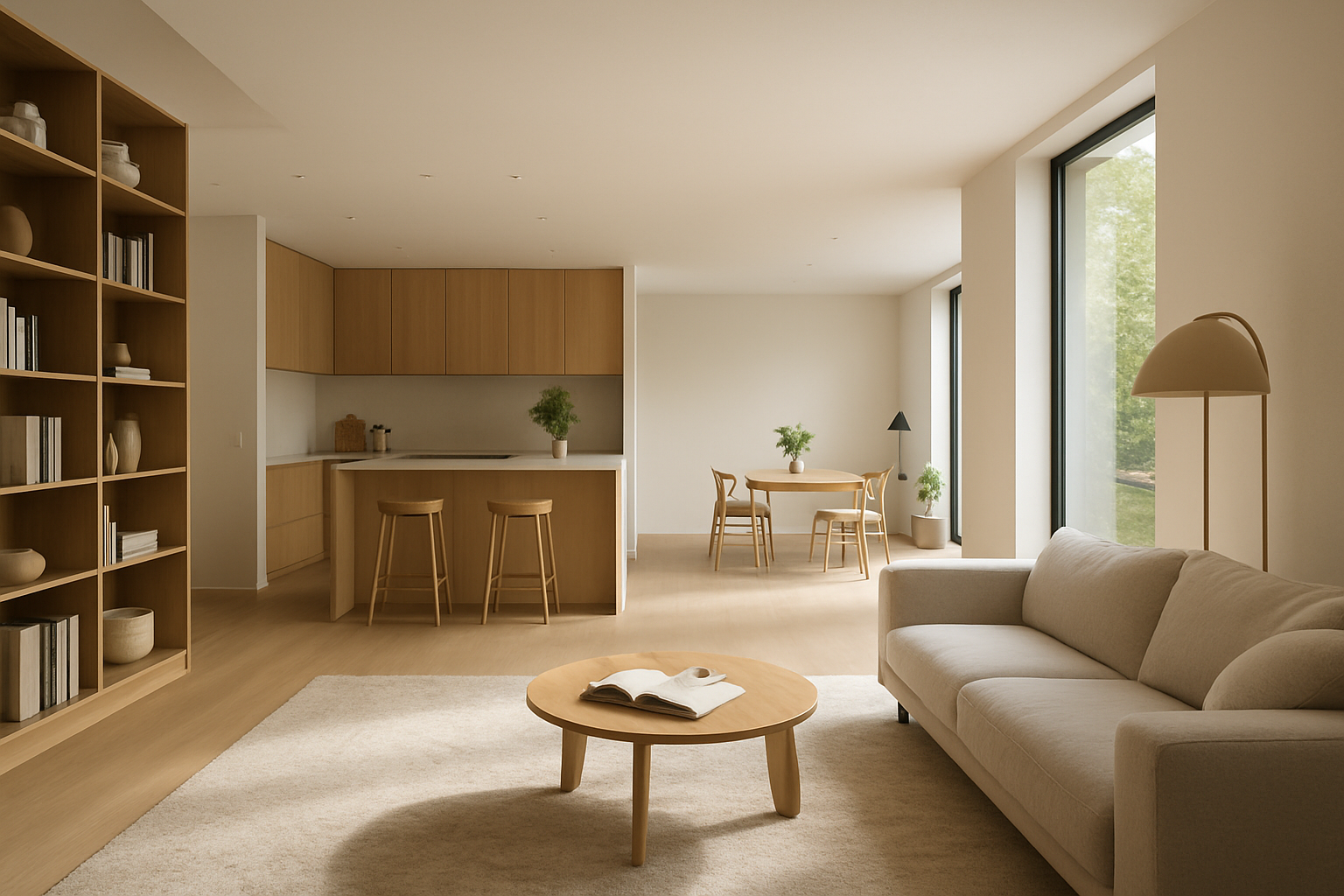Embracing Japandi: The Serene Fusion of Nordic and Japanese Design
The living room serves as the heart of our homes, reflecting our personalities and providing a sanctuary for relaxation and connection. In recent years, a captivating design trend has emerged, blending the best of two distinct aesthetics to create a harmonious and inviting space. Japandi, a portmanteau of Japanese and Scandinavian, combines the minimalist principles of both cultures to produce interiors that are both functional and serene. This fusion style has gained significant traction among homeowners and interior designers alike, offering a fresh approach to living room decor that emphasizes simplicity, natural materials, and a connection to nature.

The Origins of Japandi
Japandi’s roots can be traced back to the late 19th century when Japan opened its borders to international trade after centuries of isolation. This cultural exchange led to a mutual appreciation between Japanese and Scandinavian designers, who recognized similarities in their approaches to craftsmanship and aesthetics. Both cultures value simplicity, functionality, and a deep connection to nature, which laid the groundwork for the eventual emergence of Japandi as a distinct design style.
Key Principles of Japandi Design
At its core, Japandi embraces minimalism and celebrates the beauty of imperfection. The style incorporates clean lines, neutral color palettes, and natural materials to create a sense of calm and balance in the living room. Wood, stone, and bamboo feature prominently, often in their raw, unfinished states. Furniture pieces are typically low-profile and multifunctional, adhering to the Scandinavian principle of “hygge” (coziness) while maintaining the Japanese concept of “wabi-sabi” (finding beauty in imperfection).
Color Palettes and Textures in Japandi Living Rooms
Japandi living rooms often feature a muted color palette that draws inspiration from nature. Soft whites, warm grays, and earthy tones create a soothing backdrop, while pops of muted greens, blues, or terra cotta add depth and interest. Textures play a crucial role in adding warmth and dimension to the space. Rough-hewn wood, smooth ceramics, and soft textiles like linen and wool are skillfully combined to create a tactile and visually appealing environment.
Furniture Selection and Arrangement
When choosing furniture for a Japandi-inspired living room, the focus is on quality over quantity. Pieces are carefully selected for their craftsmanship, functionality, and ability to stand the test of time. Low-slung sofas, platform coffee tables, and streamlined storage solutions are common choices. The arrangement of furniture emphasizes negative space, allowing room for movement and creating a sense of openness. This approach not only enhances the visual appeal of the space but also promotes a feeling of tranquility and mindfulness.
Lighting in Japandi Interiors
Lighting plays a crucial role in creating the right ambiance in a Japandi living room. Natural light is prioritized, with large windows and sheer curtains allowing sunlight to filter through. Artificial lighting is used to complement natural light and create a warm, inviting atmosphere. Paper lanterns, inspired by Japanese design, are often paired with sleek Scandinavian floor lamps to provide a balanced mix of ambient and task lighting. The goal is to create a soft, diffused glow that enhances the room’s serene atmosphere.
Incorporating Nature and Greenery
A strong connection to nature is fundamental to both Japanese and Scandinavian design philosophies, making it a key element of Japandi living rooms. Indoor plants are used generously to bring life and freshness to the space, with a preference for species that thrive in low-light conditions and require minimal maintenance. Bonsai trees, ficus plants, and pothos are popular choices. Natural materials like stone, wood, and bamboo are used in decorative elements and furniture, further reinforcing the link between the indoor and outdoor environments.
Accessorizing with Purpose
In keeping with the minimalist ethos of Japandi, accessories are chosen carefully and with purpose. Each item should serve a function or hold significant meaning. Handcrafted ceramics, woven baskets, and carefully curated artwork add personality to the space without creating clutter. The Japanese concept of “ma” or negative space is respected, allowing room for the eye to rest and appreciate each element individually. This thoughtful approach to accessorizing creates a living room that feels both personal and serene.
The Impact of Japandi on Sustainable Living
One of the most significant benefits of adopting a Japandi-inspired living room is its alignment with sustainable living practices. The emphasis on quality, longevity, and natural materials encourages homeowners to invest in pieces that will last for years, reducing waste and overconsumption. The style’s focus on simplicity and functionality also promotes a more mindful approach to consumption, encouraging individuals to consider the environmental impact of their design choices.
Adapting Japandi to Different Living Spaces
While Japandi originated as a blend of two specific cultural aesthetics, its principles can be adapted to suit a variety of living spaces and personal tastes. For those living in smaller urban apartments, the style’s emphasis on multifunctional furniture and clutter-free spaces can help maximize limited square footage. In larger homes, Japandi principles can be used to create cohesive, flowing spaces that promote a sense of calm throughout the entire living area. The key is to focus on the core tenets of simplicity, functionality, and connection to nature while allowing room for personal expression.
In conclusion, Japandi offers a refreshing approach to living room decor that resonates with those seeking a balance between aesthetics and functionality. By blending the best of Japanese and Scandinavian design principles, this style creates spaces that are not only visually appealing but also promote a sense of well-being and mindfulness. As we continue to seek ways to create more intentional and sustainable living environments, Japandi stands out as a timeless and adaptable design philosophy that can transform our living rooms into true sanctuaries of calm and beauty.






